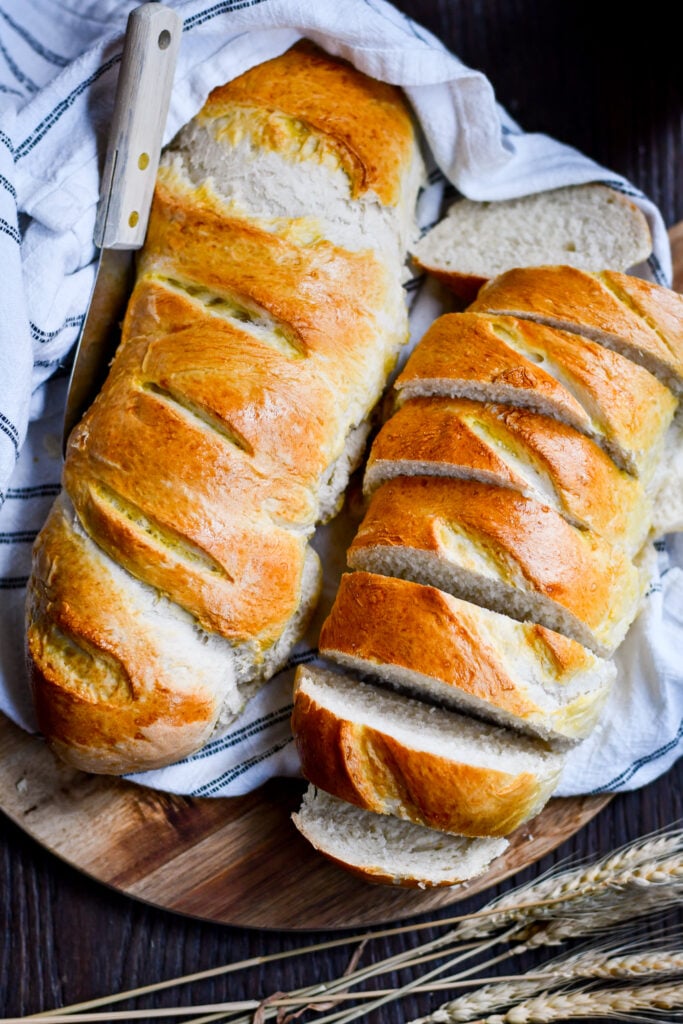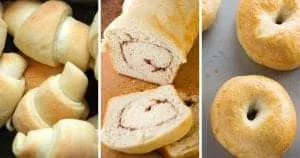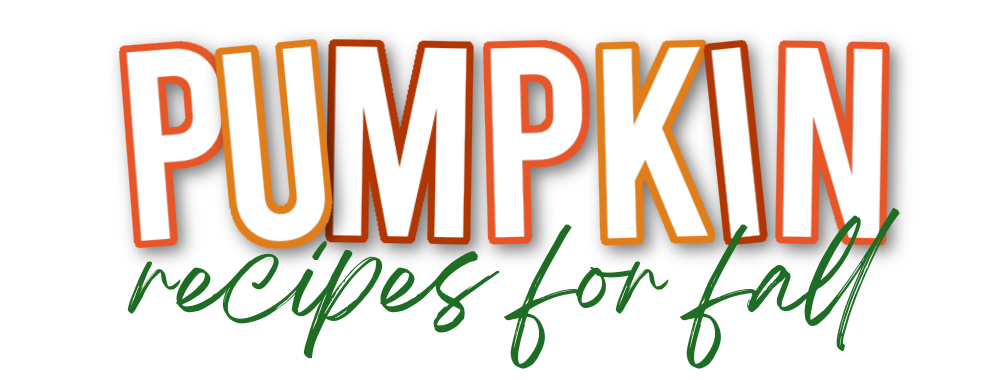French Bread Recipe + the Difference From Italian Bread
French Bread vs. Italian Bread
We’re taking an in-depth look at French Bread vs. Italian Bread in this blog post. Plus we’ll walk you through a simple French bread recipe (so much better than the grocery store version!) while pointing out the unique features that distinguish it from Italian loaves.
These two iconic bread types have their own shapes, ingredients, and techniques, creating distinct baking and eating experiences.
The French bread recipe in this post is technically New Orleans Style French Bread (we’ll get into the specific characteristics of this type of French bread further down in the post), but in our house we just call it, “Jessica’s bread recipe.” Named after a dear friend of mine who shared this recipe with me several years ago. It’s been a well-used and much-loved family recipe ever since.
Our favorite pairing with this bread is, hands down, our Pumpkin Soup (which can also be made as butternut squash soup)!
French Bread vs. Italian Bread | What’s the Main Difference?
Italian bread and French bread are both beloved bread varieties with distinctive characteristics. Here are some primary differences between the two:
1. French Bread vs. Italian Bread: Ingredients
- Italian Bread: Italian bread typically contains only flour, water, yeast, and salt. The simplicity of its ingredients allows the wheat flavor to shine through.
- French Bread: French bread often includes a small amount of fat, such as butter, and sometimes even a touch of sugar, which can impart a slightly sweet taste.
2. French Bread vs. Italian Bread: Texture
- Italian Bread: Italian bread tends to have a chewy, thick crust and a slightly denser crumb, which is excellent for soaking up olive oil or sauces (think focaccia bread)
- French Bread: French bread boasts a thin, crisp, almost hard crust that shatters when you bite into it, and a light, airy texture with larger holes. This makes it ideal for sandwiches.
3. French Bread vs. Italian Bread: Shape
- Italian Bread: Italian bread is often a round shape, with a smooth, golden-brown crust. Sometimes it’s even flat, like Italian focaccia.
- French Bread: French bread is typically long and slender, with a more rustic appearance, often scored with diagonal slashes.
4. French Bread vs. Italian Bread: Flavor
- Italian Bread: The focus of traditional Italian bread is on the natural flavor of whole grain, resulting in a nuttier, more pronounced wheat taste.
- French Bread: French bread has a milder flavor, with the addition of butter and sugar sometimes giving it a subtly sweet note.
5. French Bread vs. Italian Bread: Use
- Italian Bread: In Italian cuisine, the bread is commonly used for dipping in olive oil, as a side for pasta dishes, or for making bruschetta.
- French Bread: French bread is favored for making sandwiches, especially the iconic French baguette, which is perfect for creating baguette-style sandwiches like the French “jambon-beurre.”
6. French Bread vs. Italian Bread: Crusty Bread
- Italian Bread: Most types of Italian bread often have a thicker and more consistent crust.
- French Bread: French bread boasts a thin and crispy crust.
While these differences exist, it’s important to note that there’s a lot of variation in bread recipes within both Italian and French cuisine. Regional differences and personal preferences can lead to further variations in flavor, texture, and appearance within these broad categories.
Ingredients | French Bread Recipe
In a traditional French bread recipe, the choice of ingredients and their precise measurements play a crucial role in achieving the desired texture, flavor, and structure of this homemade bread. Here’s an overview of the key ingredients and their roles:
- Flour: Flour is the primary ingredient and provides the structure for the bread. French bakers prefer using high-protein bread flour. The gluten in the flour forms a network that traps carbon dioxide produced by the yeast, creating a light and airy crumb.
- Water: Water hydrates the flour, activates the yeast, and helps develop gluten. The ratio of water to flour affects the hydration level, which can influence the final texture of the bread. A higher hydration level results in a more open crumb with larger air pockets.
- Yeast: Yeast is responsible for fermentation, which causes the bread to rise. In French bread recipes, active dry yeast or instant yeast is commonly used. The yeast consumes sugars in the dough, producing carbon dioxide and alcohol, which leavens the bread.
- Salt: Salt plays a crucial role in enhancing the flavor of the bread and controlling the fermentation process. It helps to regulate yeast activity, preventing the bread from rising too quickly, and adds depth to the taste.
- Sugar: Some French bread recipes may include a small amount of sugar, which acts as a food source for the yeast, contributing to a slightly sweet flavor and aiding in the browning of the crust.
- Fat: While not always included, a small amount of fat, like butter, can be used in some French bread recipes. It adds richness to the bread’s flavor and contributes to a softer texture and chewy crumb.
New Orleans-Style French Bread
New Orleans-style French bread is a specific type of French bread that is closely associated with the city of New Orleans, Louisiana. It’s a key component of traditional New Orleans cuisine, particularly when it comes to po’boy sandwiches.
The distinguishing features of New Orleans-style French bread include:
✓ Crispy Crust
It has a thin, crispy crust that shatters when you bite into it. The texture of the crust is often attributed to the high humidity in the region.
✓ Chewy, Soft Interior
Inside, the bread is soft and chewy, with a slightly airy crumb. This texture is ideal for soaking up the juices and flavors of fillings in po’boy sandwiches.
✓ Simplicity
New Orleans-style French bread typically consists of just a few basic ingredients: white flour, water, yeast, and salt. It’s characterized by its simplicity and lack of additives.
✓ Baguette-Like Shape
It is often shaped like a baguette, long and slender, making it a perfect vessel for sandwich fillings.
✓ Freshness
The bread is best when consumed fresh out of the oven, as it tends to lose its unique texture and flavor fairly quickly due to its minimal use of preservatives.
Main Courses Using French Bread
We love homemade French bread as much as the next guy… well, maybe a little more. Which is why we try to incorporate it into as many meals as we can. It’s the best bread and makes EVERY MEAL better. It really just does. Here are some of our favorite meals that use French bread as the star ingredient:
1. French Toast
Obviously.
Slice French bread into thick pieces, soak them in a mixture of eggs, milk or cream, sugar, and cinnamon, then cook on a griddle or skillet. Serve with syrup, fresh fruit, or powdered sugar. We have a couple of French toast recipes on our blog, including: The Best Eggless French Toast and Cinnamon French Toast with Bananas Foster.
2. French Bread Pizza
Split a crusty loaf of French bread lengthwise, top it with tomato sauce, cheese, and your favorite pizza toppings, then bake until the cheese is bubbly and golden brown.
Alternatively, you could also use the French bread dough as pizza dough. Shape it as a pizza crust and top it with sauce, cheese, and other toppings before baking.
3. Bread Pudding
Cube the bread and use it to make a sweet or savory bread pudding. For a sweet version, add sugar, eggs, milk, and your choice of flavorings (e.g., vanilla, cinnamon, raisins). For a savory twist, use cheese and vegetables.
We’ll be sharing our favorite bread pudding recipe soon!
4. French Bread Breakfast Casserole
Tear the bread into chunks, mix it with eggs, milk, cheese, and your choice of breakfast ingredients like bacon, sausage, or vegetables, then bake it into a savory breakfast casserole.
5. Sandwiches
Of course, you can use French bread to make classic sandwiches like a French dip, po’boy, or any other sandwich you fancy. Like our Brie Grilled Cheese with Bacon & Jam.
More Sandwich Recipes
Tips for Success
- Use High-Quality Ingredients: Start with the best-quality bread flour, fresh yeast, and sea salt. High-quality ingredients make the biggest difference in the final product.
- Weigh Ingredients: For accuracy, weigh your flour and other ingredients rather than relying solely on volume measurements. This ensures a consistent dough each time.
- Proper Hydration: Maintain the right balance of water to flour for your desired texture. Generally, a hydration level of about 65-70% works well for French bread.
- Knead the Dough: Knead the dough until it’s smooth and elastic. This process develops gluten, which gives the bread its structure and texture. You can perform the “windowpane test” to check gluten development.
- Bulk Fermentation: Allow the dough to rise in a warm, draft-free place during bulk fermentation. The first rise usually takes 1-2 hours, or until the dough has doubled in size.
- Stretch and Fold: Incorporate a few stretch-and-fold sessions during the bulk fermentation. This helps strengthen the dough and distribute the yeast.
- Cold Fermentation (Optional): For a more complex flavor, you can let the dough rise in the refrigerator overnight (cold fermentation). This develops the dough and can enhance the final product. I don’t usually take the time to do this, but I can really taste a difference when I do!
- Preheat the Oven: Preheat your oven thoroughly, and use a baking stone or steel if possible. This ensures that your French bread bakes evenly and achieves that classic crust.
- Create Steam: Steam is crucial for a crispy crust. You can achieve this by placing a pan of water in the oven, or by spritzing the loaves with water just before baking. Also, slash the dough to allow for proper expansion.
- Baking Temperature and Time: Start with a high baking temperature (around 450-475°F or 230-245°C) to create a rapid oven spring (the initial rise during baking). Reduce the temperature after a few minutes, then bake until the bread is golden brown.
- Cooling: Allow the bread to cool at room temperature on a wire rack to prevent trapped steam from softening the crust. This helps maintain the crispy exterior.
- Storage: Store your freshly baked bread in a paper bag or a cloth to maintain its crustiness. Plastic bags can make it go soft.
- Use a Sourdough Bread Starter (Optional): If you like a slightly tangy flavor and more complex texture, consider using a sourdough starter in your recipe.
- Learn and Adjust: Pay attention to the dough’s appearance, texture, and consistency throughout the process. If the dough is too dry, add more water; if too wet, add more flour.
Our Favorite French Bread Recipe

French Bread Recipe
It's really a must-have staple recipe in every home cook's repertoire. Once you go homemade, you'll never want to go back to that store-bought bagged loaf again. Because nothing in the world compares with a hot, steamy, crusty loaf of soft french bread coming out of your oven.
Ingredients
- 2 and 1/4 cups warm water (think bath water)
- 2 tbsp yeast
- 2 tbsp sugar
- 1 tbsp salt
- 2 tbsp vegetable or olive oil
- 5 cups all purpose flour + up to 1/2 cup more if need
- 1 egg + 2 tbsp water, beaten
Instructions
- Pour the warm water into a small bowl (I use a 4-cup Pyrex measuring cup). Sprinkle the yeast over the water. Sprinkle the sugar and the salt over the yeast. Add the oil. Let water sit for about 5 minutes until the yeast is foamy (see this post on how to proof yeast).
- Fit your stand mixer with the dough hook and add the 5 cups of all purpose flour to the mixer bowl. Add the water to the flour (be sure to scrape the sides of the bowl so that all the sugar comes out). Turn the mixer on low speed and mix until a dough forms. The dough should neatly pull from the sides of the bowl. If it sticks to the sides, add the additional 1/2 cup a little bit at a time until the dough is smooth, elastic, and pulling from the sides.
- Once the dough looks just right, turn the mixer off and cover the bowl with plastic wrap or a kitchen towel. Let rest for 10 minutes. Then knead dough for a minute.
- Allow to rest and rise for another 10 minutes. Then knead again for a minute. Repeat 3 more times (for a total of 5 rests and 5 kneads).
- Preheat oven to 375ºF.
- Divide dough into two equal portions. Roll out each portion of dough into a large rectangle, about a 1/4 inch thick. Roll the dough from the long end, cinnamon roll-style. Fold the ends underneath to seal it and shape the bread with your hands a little bit (just to move some of the thickness from the ends to the middle).
- Place each loaf on a baking sheet (I bake both loaves on the same baking sheet). Use a sharp knife to cut diagonal gashes in the top of the dough. Brush the egg wash on top of each loaf.
- Bake for 30 minutes. Serve immediately or let cool.
- You can store in an airtight container for up to a week.
Notes
*I've used half whole wheat flour with no problems.
I have never made this recipe without a stand mixer. I assume you can do it, but I can't personally vouch for the outcome.
Nutrition Information:
Yield: 20 Serving Size: 1Amount Per Serving: Calories: 30Total Fat: 1gSaturated Fat: 0gTrans Fat: 0gUnsaturated Fat: 1gCholesterol: 9mgSodium: 355mgCarbohydrates: 4gFiber: 0gSugar: 1gProtein: 1g
































5 Comments on “French Bread Recipe + the Difference From Italian Bread”
The bread looks delicious, but I am struggling to find the recipe. I must be overlooking something…can. you help? Thanks!
Hey there! Sorry about that, I’m not sure what’s happening! But here’s a link to the Print page. Hopefully this works better for you: https://keatseats.com/wp-json/mv-create/v1/creations/191/print
Where is the recipe for French Bread?
Hey there! Sorry about that, I’m not sure what’s happening! But here’s a link to the Print page. Hopefully this works better for you: https://keatseats.com/wp-json/mv-create/v1/creations/191/print
Where is the recipe? I have tried to click on everything I thought might be the recipe. Nothing!!!